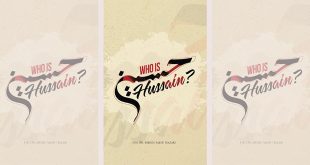One does not naturally think of traditional nuns of the Order of St Benedict as popular singers, yet the sisters from a rural Missouri monastery, The Heart of Mary, have become something of a hit. Their albums are ranked as best-selling by Billboard, the US main album chart, along with trendy names like ‘Black Panther’ and ‘Hamilton’, the super-popular musical. Bit of a miracle? Or perhaps just thanks to the nuns’ melodies as being jolly, spiritually good?
The motto of Benedictine monks and nuns is in Latin: Ora et Labora. Pray and work. They combine activity with adoration. Now, in Christianity worship and music go hand in hand. Even the most extreme puritan fundamentalist could never appeal to the Bible against singing or dancing because the psalms are religious songs. Many of them come with musical directions addressed to the choirmaster, including reference to stringed instruments. King David danced with joy when the Ark of the Covenant was brought to Jerusalem. St Matthew’s Gospel relates that Jesus and his disciples after the Last Supper sang a hymn. As to church tradition, the psalms figure in settings like Vespers by eminent composers like Monteverdi, Vivaldi and Mozart. Gregorian chant is indeed one of the glories of monastic liturgy. The Missouri nuns are in good company.
As to Judaism, music of course has been part of Jewish life since biblical times. The Book of Exodus says that Moses himself led the people in songs of divine praise. The sacrificial worship of the ancient Jerusalem Temple included music. Both in synagogue services and in Jewish homes music continues to play a part. Chanting and melodies are then still integral to the religious and cultural life of Jews. I have myself watched two orthodox rabbis singing beautiful lyrics by Simon and Garfunkel. Indeed, singer and songwriter Leonard Cohen asked rhetorically: ‘Without music, would we be Jewish at all?’
In Islam music plays no part in mosque worship and some Muslims reject it altogether as part of their religious life. However, there are large swathes of Islam in which music is not frowned upon but highly valued, such as in many Sufi fraternities. When I lived in Turkey I made a point of travelling once a year to the city of Konya, to share in the inspiring Mevlevi festival, held in memory of Jelaluddin Rumi, the great poet and mystic, one of the glories of Islam. The dancers of the Sema dance, a.k.a. the whirling dervishes, were accompanied by an array by instruments, from drums to flutes. The overall impression was one of powerful contemplation, a drawing of the pious person closer to God.
One of the most fascinating aspects of Iranian religious and popular culture is the Tazieh play. Some go as far as to call it ‘the sacred drama, or the passion play, of Islam’. It portrays the momentous sacrifice of Imam Husayn and his family and supporters at the battle of Karbala, during which they were slain by the cruel forces of a tyrant. My Iranian friends witness to its strong emotional impact on anybody involved, from spectators to actors. It is worth emphasising how the action, the spoken words and the singing of a Tazieh play are accompanied and enhanced by the participation of a variety of musical instruments. There are drums, trumpets, cymbals and flutes. Clearly, Tazieh drama, also performed outside of Iran, in other parts of the Shi‘a and Muslim world (I was fortunate to see examples in London and Leicester), has a deep religious role and significance.
To be fair, not all types of music are likely to convey a contemplative or spiritual dimension. The Italian composer Giuseppe Tartini wrote a violin sonata, The Devil’s Trill, which he claimed had been dictated to him in a dream by the Evil One himself, in exchange for the musician’s soul. Allegedly, the sonata has a diabolical influence: if one listens to it, afterwards something weird will occur. Similarly, Tolstoy’s novella, The Kreutzer Sonata, tells of a man murdering his wife after he discovers her affair with a violinist. The two lovers had been listening together to Beethoven’s composition and the husband considered the music responsible for the adultery.
Plato, the Greek philosopher, taught that music should be part of the proper education, moral and aesthetic, of people of his ideal state, The Republic. However, he distinguished between different types of music, linking them to diverse feelings and moods. Frivolous or unbecoming harmonies, likely to provoke immoderate laughter or frenzy, were banned. Martial music, on the other hand, was suitable for soldiers, as it encouraged courage and discipline. One can imagine what Plato would have made of modern acts like Eminem, the Rolling Stones, Black Sabbath and Iron Maiden!
The title of the Benedictine nuns’ new album is ‘The Hearts of Jesus, Mary and Joseph’. It is meant as homage to the Holy Family of Christianity. Their music is intended to honour especially the paternal role of St Joseph as the foster father of Jesus. Its value is not merely aesthetic, in fact. Considering that the family is the fundamental unity of society and, sadly, partly under attack in many Western countries, one can see the nuns’ music as combining both lovely sounds and a bracing moral message. Surely that is an exemplary function.
The article was written by Revd Frank Julian Gelli -an Anglican priest and cultural critic, working on religious dialogue- and fist published in Islam-today magazine.
 Ijtihad Network Being Wise and Faithful Muslim in the Contemporary World
Ijtihad Network Being Wise and Faithful Muslim in the Contemporary World
